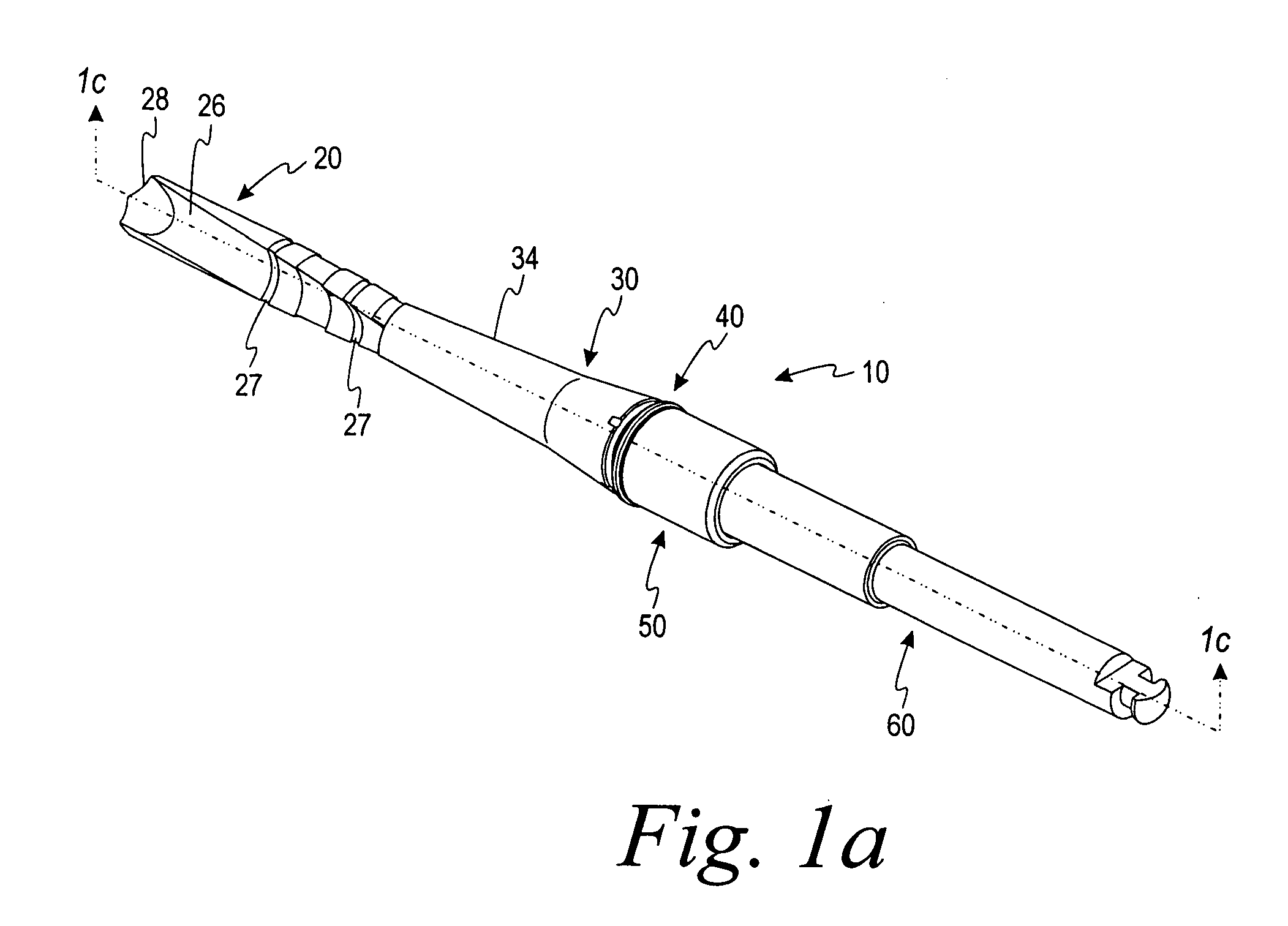Drill bit assembly for bone tissue including depth limiting feature
a bone tissue and depth limitation technology, applied in the field of drill bit assembly, can solve the problems of limited clinician's ability to use these visual markers, the inability to properly perform sterilization process, and the root of adjacent teeth may be affected by the bore siz
- Summary
- Abstract
- Description
- Claims
- Application Information
AI Technical Summary
Benefits of technology
Problems solved by technology
Method used
Image
Examples
Embodiment Construction
[0024]As shown in FIGS. 1a-1c, a drill assembly 10 comprises a drill bit 20, a collet nose drill stop 30, a collet sleeve 40, a concealment collar 50, a collet body 60, a retaining spring 70, and a plurality of retaining balls 80. The various components of the drill assembly 10 are each described in greater detail below.
[0025]The drill bit 20 includes a drive portion 22 at its one end that inserts into a receiving portion 65 (FIG. 2a) of the collet body 60. The drive portion 22 further has a retaining groove 23 around a periphery of the drive portion 22. The retaining groove 23 receives the plurality of retaining balls 80 to secure the drill bit 20 within the drill assembly 10. An anti-rotational portion 24 is located at a shoulder 25. The anti-rotational portion 24 shown in FIGS. 1a-1c has a hexagonal shape, but any other non-round cross sectional shape may be utilized. Each of a plurality of flutes 26 terminates in a cutting edge 28 which slices the bone tissue to develop a bore. ...
PUM
 Login to View More
Login to View More Abstract
Description
Claims
Application Information
 Login to View More
Login to View More - R&D
- Intellectual Property
- Life Sciences
- Materials
- Tech Scout
- Unparalleled Data Quality
- Higher Quality Content
- 60% Fewer Hallucinations
Browse by: Latest US Patents, China's latest patents, Technical Efficacy Thesaurus, Application Domain, Technology Topic, Popular Technical Reports.
© 2025 PatSnap. All rights reserved.Legal|Privacy policy|Modern Slavery Act Transparency Statement|Sitemap|About US| Contact US: help@patsnap.com



